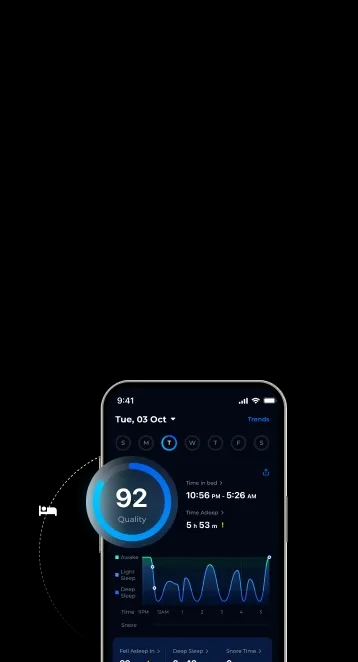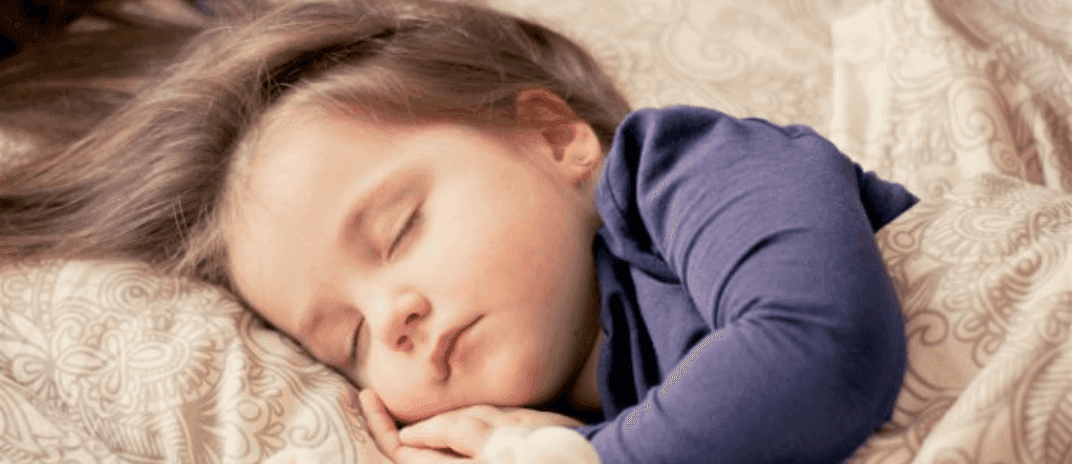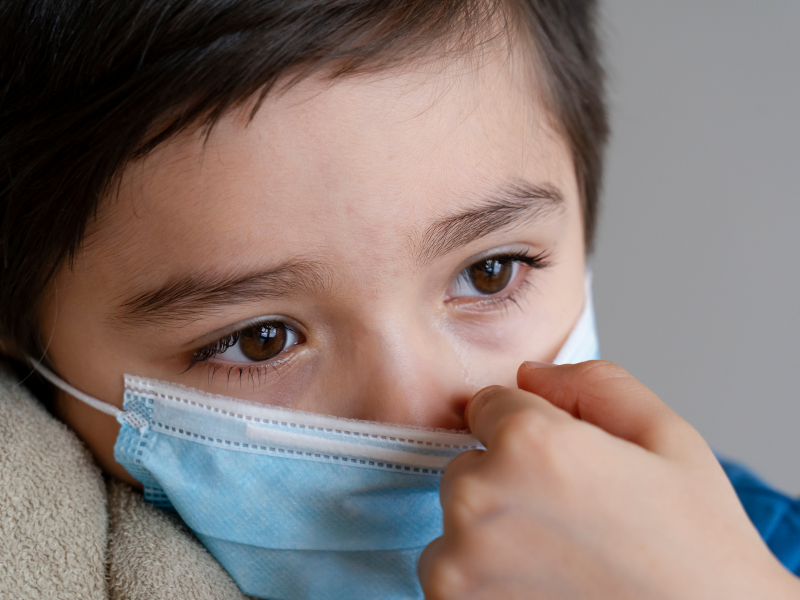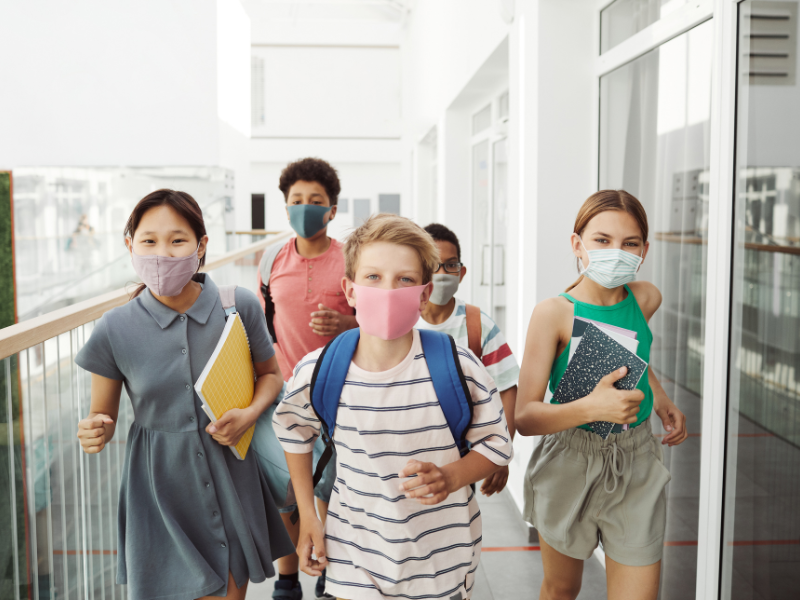


Sleep is a vital factor in our general well-being. Healthy sleep helps regulate the behavior, emotions, and anxiety.
The COVID-19 pandemic and subsequent global lockdowns compelled people to change and adapt to an unprecedented situation. The countermeasures against the pandemic influenced children and adolescents particularly. For instance, having to cope with major variations in routines (e.g., a shift in the regularity of daily schedules and homeschooling) and worrying about individual and community health creates stress and anxiety.
With this survey, the researchers wanted to evaluate variations in sleep patterns and behavior of Austrian children and adolescents (6–18 years) during COVID-19. Their results aligned with studies regarding children and adolescents from other countries. For instance, they showed an overall 50% delay in sleep and wake times of the cohort during the entire week.

The study concluded that sleep issues increased significantly during the pandemic. Compared to the pre-pandemic situation, almost twice as many children and adolescents reported sleep issues during the pandemic duration. Moreover, pandemic-related anxiety was vital for general sleep quality and sleeping problems. Their data illustrated that the higher the COVID-19-related anxiety, the worse the perception of general sleep quality and the more sleeping issues. Additionally, bedtimes became irregular in most of the participants, time in bed increased as well as the frequency of naps and daytime sleep. Lastly, children and adolescents were less active, spent less time in daylight and showed a considerable increase in the usage of media devices. Their outcomes related to a delay in bed- and wake times align with past studies evaluating similar age groups.
Moreover, the study data show a gradual increase in the later bed and wake times with age. For instance, most 6-10-year-olds reported a delay of 0.5 to 1.5 h. Similarly, most 15-18-year-olds reported a substantial delay of two or more hours. The extent of parental monitoring explains the differences across age groups, i.e., parents might be stricter with the youngest (e.g., enforcing set bedtimes). Contrarily, adolescents are typically more independent in selecting their bed and wake times.

Furthermore, many studies have reported that humans experience a circadian phase delay around the onset of puberty. Then, due to developmental changes, they transition to a later-typed chronotype that favors late nights and mornings. Therefore, especially in the case of adolescents, home confinement may have offered an opportunity to shift their sleep schedules away from society and towards their own circadian preferences, thereby reducing their social jetlag during the pandemic. Additionally, poor sleep patterns consistently correlate to increased social media usage and screen time among kids and adolescents. As a result, they can face later sleep onset, shorter sleep duration, and more sleeping issues like trouble falling asleep after nighttime awakening.
Various studies reported reduced sleep durations among 11–16- and 6–17-year-old Chinese and Italian samples. However, several studies have also reported increased sleep duration during the pandemic. In addition, many external factors determine the wake times of children and adolescents. Since in-person teaching still took place in Austria, most participants attended their schools 1–5 times weekly. This might explain the smaller delays in their wake times during weekdays. A mixture of hybrid, online, and in-person teaching may have led to a greater night-to-night variability in sleep–wake patterns. A US student sample (13-18 years) also shows the same situation. Around one third of the participants reported a drop in general sleep quality and almost twice as many respondents reported having sleeping problems (i.e., 38.0% vs. 20.9%).

Similar to other studies, females rated their sleep quality significantly worse than males and reported more sleep problems comparatively. Furthermore, insomnia symptoms (difficulties falling asleep and maintaining sleep), nightmares, and daytime drowsiness were the most prevalent problems. Some studies also showed increased naps and time spent in bed. This scenario further aggravated an overall disruption of the daily routine resulting in irregular bedtimes.
First, the survey reported a considerable reduction in physical activity in 3/4th participants, with the youngest showing the strongest reduction. These outcomes are worrisome since the Austrian recommendation for physical activity for children and adolescents between 6 and 18 years is one hour or more daily – with moderate to vigorous intensity. Sedentary behavior and obesity can create detrimental short- and long-term effects on physical and psychological health and sleep quality. They increase the risk for insomnia, shorter sleep durations, disturbed (or interrupted) sleep, and increased daytime drowsiness. Their data indicate these adverse effects and support findings from other research studies performed during the pandemic. The study concluded that regular physical exercise and sleep bolster the immune system, which is vital against the pandemic.

A second reason for the increase in sleep-related issues might be reduced exposure to daylight. Across all age groups, 42.2% of participants experienced “less” to “a lot less” daylight exposure during the pandemic. Daylight is a natural “Zeitgeber” and helps to synchronize the circadian system with the sleep-wake cycle. Low light exposure during the day sensitizes the circadian system for light exposure during the evening hours. Artificial light exposure around and after dusk leads to greater melatonin suppression and a sleep onset delay. Thus, insufficient daylight exposure may partially complicate falling asleep and getting up early the next morning.
The results demonstrate a positive correlation between sleep issues and pandemic-related anxiety. The strongest effects occur among the youngest participants (6–10 years). These results also align with adult studies showing that reduced sleep quality during the pandemic was most prevalent in people with elevated anxiety symptoms and depression and with lower social support.

Lastly, the authors highlight that the sample size, including many young children, strengthens the study. These outcomes combine the following interesting findings. (i) the sleep problems have alarmingly increased across all age groups, (ii) the daily life habits have varied to maladaptive responses, such as less frequent movement and spending reduced time in natural daylight. Therefore, the data showed an increased usage of multimedia devices.
The study data show substantial variations in sleep patterns and behavior during the pandemic as compared to the pre-pandemic era. The results demonstrate an overall delay in sleep and wake times. Almost twice as many respondents reported sleep issues during the pandemic compared to pre-COVID.
Consequently, policymakers should implement and enforce health-promoting countermeasures and programs to ensure better sleep quality and minimize pandemic-related issues.
You might also like:
Can Melatonin be a Potential Silver Bullet in Treating COVID-19 Patients?
Bothe, K., Schabus, M., Eigl, ES. et al. Self-reported changes in sleep patterns and behavior in children and adolescents during COVID-19. Sci Rep 12, 20412 (2022). https://doi.org/10.1038/s41598-022-24509-7
Lucchini, M., Bekelman, T.A., Li, M. et al. Impact of the COVID-19 pandemic on children’s sleep habits: an ECHO study. Pediatr Res 93, 586–594 (2023). https://doi.org/10.1038/s41390-022-02309-z
Sharma, M., Aggarwal, S., Madaan, P., Saini, L., & Bhutani, M. (2021). Impact of COVID-19 pandemic on sleep in children and adolescents: a systematic review and meta-analysis. Sleep medicine, 84, 259–267. https://doi.org/10.1016/j.sleep.2021.06.002